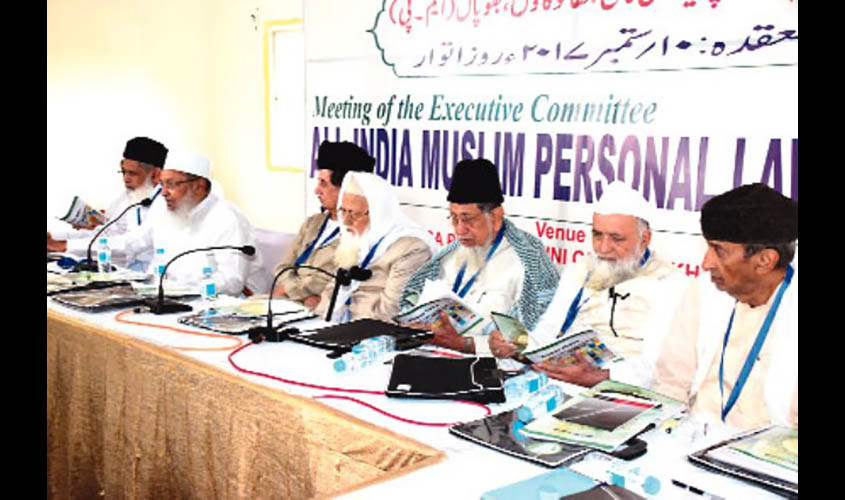Restoration of the three holy sites of Hindus would ensure communal harmony.
It was Emperor Jehangir who permitted the building of a magnificent temple at the Mathura birthplace of Lord Krishna. The previous structure had been razed by over-zealous warriors in the past, and the Mughal Emperor noticed that the denuded site was hurting the feelings of his Hindu subjects. Around 1626, a temple was built, atop which a lamp was lit every evening, and which became a place of pilgrimage for Hindus. Jehangir’s successor Shahjehan had no problem with the Krishna Janmasthan temple, but the Emperor’s son Aurangzeb did. Although the history books favoured by Jawaharlal Nehru and his successors do not deign to notice such details, Aurangzeb was angered by the sight of the magnificent temple so close to his Agra palace, and ordered in 1670 that it be razed once again. This time, a mosque was built on the site rather than keeping it empty. Although Aurangzeb must have been certain that this act of wanton destruction earned him the keys to Paradise, the gentle spirit of the Holy Quran makes it unlikely that the soul of the Mughal Emperor, who ensured the collapse of the empire by his brutality
In 1951, thanks to the insistence of then President of India, Rajendra Prasad and Deputy Prime Minister Vallabhbhai Patel, the first Shiva “jyotirlinga”, the temple at Somnath, was restored. Both Prasad and Patel had also wished that the Ram Janmabhumi, the Krishna Janmasthan and the Gyan Vapi complex get restored to pre Aurangzeb days. During that period, which was just a few years after India was vivisected on the basis of the Two Nation theory (which runs that Muslims and Hindus can never co-exist peaceably with each other), it would have been a simple matter to have restored these three sites, thereby stilling latent feelings within the Hindu community aghast at the division of a subcontinent that is the common home of people of multiple faiths, but which was torn apart because of the machinations of Churchill and Jinnah. Instead, India’s first Prime Minister continued with the colonial pedagogy of deliberately downsizing the pre-British cultural heritage of the country, especially the Vedic part. Regular eruptions of communal violence even after the British have left show the folly of Nehru’s refusal to acknowledge that the world’s Hindus had as much right to their holy sites as did Muslims and Christians to their own holy sites. The historians, who since 1947 have stuck with the colonial recitation of India’s history, do not talk about efforts to persuade Nehru to ensure that Hindus be restored their three holy sites, and whether Maulana Abul Kalam Azad joined with Nehru in opposing this request. What we do know is that the learned Maulana was as unsuccessful as Mahatma Gandhi and Nehru in persuading Muslims in the United Provinces and Bihar not to hop onto the Jinnah bandwagon. Many Muslims in these parts were even more set on the partition of India than their co-religionists in Punjab, Bengal and Sindh. The Muslims of Pashtunistan and Balochistan remained backers of joining with India, but found their wishes stymied by the new Government of India, which left the Pashtuns, the Baloch as well as the Sindhis to the tender mercies of what rapidly became a Punjabi-dominated state. A state from which non-Muslim minorities were driven out and non-Punjabis reduced to second-class status, even the Sunni Muslims. Shias like Jinnah were also reduced to that situation. The Partition of India is a cautionary tale for the Muslims of the subcontinent, who today are much less better off overall than they would have been, had the subcontinent remained united.
As the examples of Lebanon, the former Yugoslavia, Syria and now Pakistan have shown, there is only a slim veneer separating tranquility between communities from the chaos of civil conflict. In India, it is imperative that the (still few) violent elements within the Hindu community (such as the terrorists who kill innocent citizens for consuming certain types of meat) do not proliferate but diminish. The Supreme Court has closed the chapter on Ayodhya, except that a sum of Rs 100 crore and a hundred lorry-loads of the best marble in India should also be handed over by the state along with 5 acres in a different location to representatives of the Muslim community who truly embody the nobility of that great faith. A grand gesture of peace, beneficence and compassion on the part of the nearly 200 million Muslims of India of peacefully and joyously returning the whole of the Gyan Vapi complex in Varanasi and the entirety of the Krishna Janmasthan in Mathura would ensure the failure of ongoing GHQ Rawalpindi efforts at resurrecting the Two Nation theory within the Republic of India. The AIMPLB needs to reflect on the contrasting examples of Emperors Jehangir and Aurangzeb, and reflect on the effect of the latter on the Mughal Empire.

